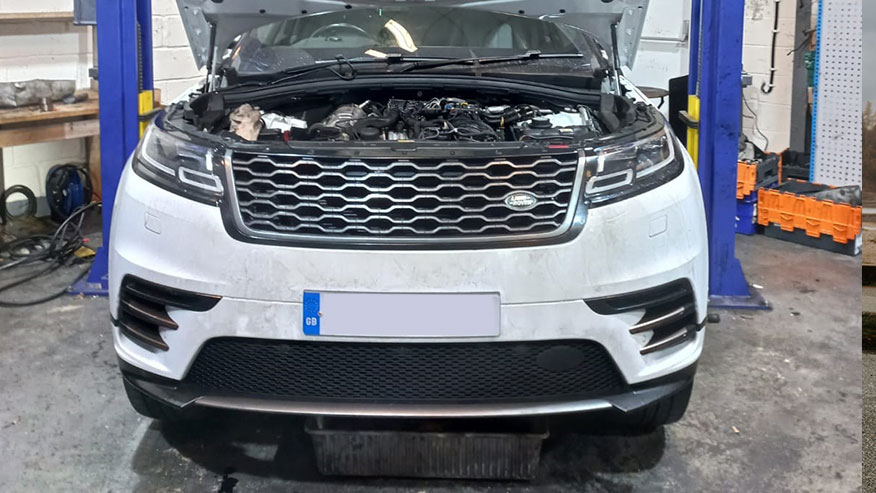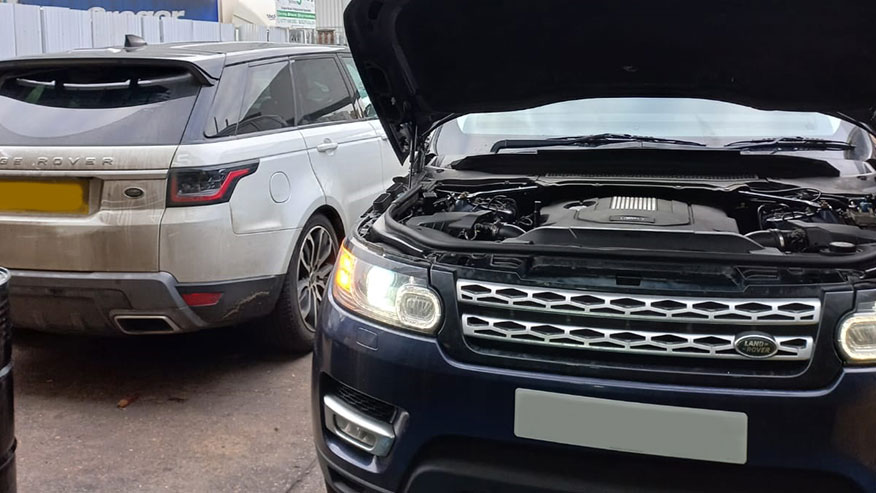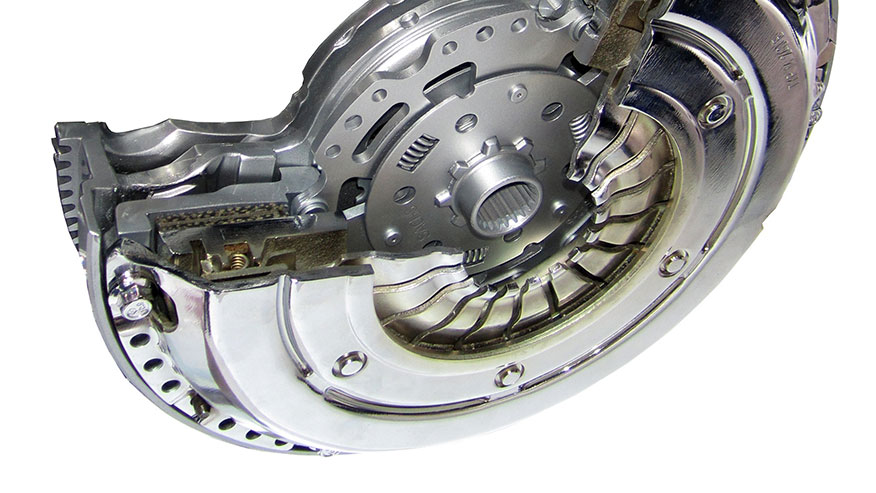Range Rover Evoque Engine Issues: Solutions & Expert Tips

The Range Rover Evoque, a dynamic blend of performance, luxury, and advanced technology, stands as a symbol of modern automotive design. However, even the most sophisticated vehicles can encounter mechanical challenges, and the Range Rover Evoque is no exception. With a focus on the Range Rover Evoque engine – the heart of this iconic SUV – we’ll delve into common problems and effective solutions. From turbocharger troubles to fuel system foibles, this detailed exploration aims to provide owners and enthusiasts with a comprehensive understanding of the Evoque’s engine issues, ensuring continued enjoyment of its exceptional driving experience.
Turbocharger Tribulations
The turbocharger in a Range Rover is a pivotal component designed to enhance engine efficiency and performance. Operating on the principle of forced induction, it utilises exhaust gases to drive a turbine, which in turn compresses air entering the engine. This process significantly boosts the engine’s power output without increasing its size, leading to better fuel economy and increased power. The turbocharger’s role in achieving a balance between performance and efficiency is crucial, especially in modern Range Rover models that aim to deliver both luxury and environmental consciousness.
Symptoms: The Evoque’s turbocharger problems often manifest as reduced engine power, a noticeable lag in acceleration, and sometimes a whining noise from the engine. In severe cases, there might be excessive exhaust smoke.
Causes: These issues typically arise due to wear and tear of the turbocharger components, oil leaks, or blockages in the air intake system.
Solutions: A Range Rover Evoque Engine Specialist would usually recommend inspecting the turbocharger for damage or leaks. If the turbocharger is faulty, replacement may be necessary. Regular engine maintenance and ensuring clean air intake can prevent such issues.
Fuel System Foibles
The fuel system in a Range Rover is engineered to ensure optimal delivery of fuel to the engine, a key aspect of vehicle performance. Comprising a fuel tank, pump, filter, and injectors, this system plays a vital role in maintaining the engine’s health and efficiency. Precision in fuel delivery is crucial for smooth engine operation, reducing emissions, and maintaining fuel economy. The system’s design is tailored to handle different fuel types, ensuring that the Range Rover meets the diverse needs of its users while adhering to stringent emission standards.

Symptoms: Fuel system issues in the Evoque can lead to engine misfires, poor acceleration, and decreased fuel efficiency.
Causes: These problems often stem from clogged fuel injectors, a failing fuel pump, or issues with the fuel filter.
Solutions: Cleaning or replacing fuel injectors and filters, along with checking the fuel pump’s functionality, are common solutions. A Range Rover Engine Evoque Specialist can provide a comprehensive fuel system service to address these issues.
Diesel Particulate Filter (DPF) Clogging
Incorporated in diesel-engine Range Rovers, the Diesel Particulate Filter (DPF) is essential for reducing harmful emissions. It captures and stores exhaust soot, preventing its release into the atmosphere. The DPF periodically regenerates, burning off the soot at high temperatures. This process is crucial for maintaining the engine’s performance and ensuring compliance with environmental regulations. The efficiency of the DPF is key to reducing the ecological footprint of diesel vehicles, aligning with global efforts towards cleaner air.
Symptoms: Reduced engine performance and increased fuel consumption are typical signs of a clogged DPF. A warning light on the dashboard may also illuminate.
Causes: The DPF can become clogged with soot, especially in vehicles frequently used for short trips where the engine doesn’t reach optimal operating temperatures.
Solutions: Regular long drives at higher speeds can help clear the DPF. In cases of severe clogging, professional cleaning or replacement might be required.
AdBlue Antics
AdBlue is a crucial component in modern Range Rover diesel engines, designed to reduce harmful emissions. It’s a urea-based solution injected into the exhaust system to trigger a chemical reaction that converts nitrogen oxides into nitrogen and water. This technology is essential for meeting stringent emission standards, making diesel engines more environmentally friendly. The use of AdBlue highlights Range Rover’s commitment to combining luxury with responsibility towards the environment.
Symptoms: Issues with the AdBlue system, used to reduce emissions in diesel engines, can trigger warning lights and reduce engine performance.
Causes: These problems often arise from sensor malfunctions or using incorrect AdBlue fluid.
Solutions: A Range Rover Engine Specialist can diagnose and rectify AdBlue system issues, including sensor replacement and system flushing.
Timing Chain Tensioner Troubles
The timing chain in a Range Rover is a critical component, ensuring the synchronisation between the engine’s camshaft and crankshaft. This precise timing is essential for the engine’s valves to open and close at the correct moments during each cylinder’s intake and exhaust strokes. A well-maintained timing chain contributes to the engine’s smooth operation, efficiency, and longevity. It is a durable and long-lasting solution, preferred over timing belts for its robustness, especially in high-performance engines like those in Range Rovers.

Symptoms: A rattling noise from the engine, especially on startup, can indicate timing chain tensioner issues.
Causes: Wear and tear or insufficient lubrication can lead to timing chain tensioner problems.
Solutions: Replacing the timing chain tensioner and ensuring proper engine lubrication are key to resolving these issues.
Crankshaft Sensor Conundrums
The crankshaft is a fundamental part of the Range Rover’s engine, converting the linear motion of the pistons into rotational motion that powers the vehicle. It’s designed to withstand significant forces and is key to the engine’s overall functionality and power output. The crankshaft’s robust design and precision engineering are crucial for delivering the smooth, powerful performance expected of a Range Rover, ensuring both reliability and efficiency in the vehicle’s operation.
Symptoms: Engine stalling and starting difficulties are common symptoms of a faulty crankshaft sensor.
Causes: Sensor failure can be due to wear, damage, or electrical issues.
Solutions: Replacing the crankshaft sensor and checking the electrical connections are effective remedies.
High-Pressure Fuel Pump Headaches (HPFP)
In a Range Rover, the High-Pressure Fuel Pump (HPFP) plays a vital role in the engine’s fuel injection system, especially in models with advanced fuel injection technologies. It pressurizes the fuel, ensuring it is injected into the combustion chamber at the optimal pressure for efficient combustion. This high level of precision in fuel delivery enhances engine performance, fuel efficiency, and emission control, aligning with the Range Rover’s reputation for performance and environmental responsibility.
Symptoms: Difficulty in starting the engine and a lack of power are signs of HPFP issues.
Causes: Wear or contamination can impair the HPFP’s functionality.
Solutions: Cleaning or replacing the HPFP, along with ensuring clean fuel usage, can resolve these problems.
Prematurely Worn Flywheel (Stop-Start Models)
In Range Rover models equipped with stop-start technology, the flywheel is integral to the system’s efficiency. It helps in smoothing out the engine’s power delivery and plays a critical role during the stop-start operation. The flywheel stores rotational energy, assisting in the quick and smooth restart of the engine, thereby enhancing fuel efficiency and reducing emissions during idle periods, such as at traffic lights. This feature underscores Range Rover’s commitment to innovative solutions for reducing the environmental impact of driving.

Symptoms: Vibrations or a rattling noise from the engine compartment can indicate flywheel wear.
Causes: Excessive use, particularly in stop-start conditions, can lead to premature wear.
Solutions: Replacing the flywheel and possibly the clutch assembly is a typical solution.
Air Suspension Problems
Range Rover’s air suspension system is a hallmark of its luxurious ride quality. Utilising air springs instead of traditional steel springs, this system automatically adjusts the vehicle’s height and damping to suit varying driving conditions. It enhances ride comfort, handling, and off-road capability, adapting seamlessly to provide a smooth drive on different terrains. The air suspension’s ability to adjust the vehicle’s height is also beneficial for improved aerodynamics and fuel efficiency, marking it as a key feature in the Range Rover’s blend of luxury and practicality.
Symptoms: Uneven vehicle stance or a rough ride can signal air suspension issues.
Causes: Leaks or compressor failure are common causes.
Solutions: Repairing leaks, replacing the compressor, or overhauling the air suspension system are effective solutions offered by a Range Rover Engine Evoque Specialist.
Conclusion
This list is not exhaustive, and symptoms can vary depending on the specific issue and model year. Always consult a qualified mechanic if you suspect any engine problems with your Range Rover Evoque.
While the Range Rover Evoque is the epitome of luxury and performance, it’s not immune to engine-related challenges. Understanding these common problems and their solutions, ideally with the expertise of a Range Rover Engine Evoque Specialist, is crucial for maintaining the vehicle’s performance and reliability. Regular maintenance and timely interventions can go a long way in preserving the integrity and driving pleasure of the Range Rover Evoque.


